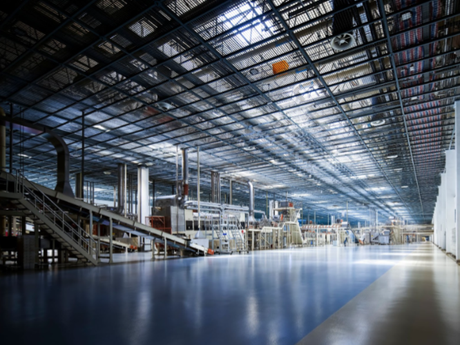
Glass Glass-reinforced plastic (GRP) flooring is gaining traction in both commercial and residential sectors across the UK due to its exceptional durability, safety features, and aesthetic versatility. This article explores the advantages and considerations of opting for GRP flooring in various applications, highlighting its suitability for modern environments.
Introduction
GRP flooring has emerged as a preferred choice for architects, designers, and homeowners looking to combine practicality with style. Understanding its benefits and installation considerations is crucial for making informed decisions in commercial and residential projects.
Benefits of GRP Flooring
- Durability and Longevity
GRP flooring is renowned for its durability, capable of withstanding heavy foot traffic and wear in high-traffic areas. Unlike traditional materials such as wood or vinyl, GRP is resistant to scratches, dents, and stains, making it ideal for commercial settings like retail stores and offices where maintaining a pristine appearance is essential.
Example: In the bustling retail environment of London’s Oxford Street, GRP flooring has been installed to endure constant footfall while maintaining its aesthetic appeal. - Safety and Slip Resistance
Safety is paramount in public spaces and workplaces. GRP flooring offers excellent slip resistance, reducing the risk of accidents even in wet or oily conditions. This feature makes it suitable for areas prone to spills or moisture, such as commercial kitchens, swimming pool surrounds, and industrial facilities.
Example: At Manchester Airport, GRP flooring is installed in passenger walkways and boarding gates, ensuring secure footing for travellers even during adverse weather conditions. - Design Flexibility
GRP flooring comes in a variety of colours, textures, and finishes, allowing designers to achieve diverse aesthetic effects. It can mimic the appearance of natural materials like wood or stone while offering the benefits of a synthetic material—ideal for creating cohesive interior designs in both commercial and residential spaces.
Example: In luxury apartment complexes in Edinburgh’s historic city centre, GRP flooring is selected for its ability to complement traditional architecture while providing modern functionality. - Low Maintenance
Compared to traditional flooring options, GRP requires minimal upkeep. Routine cleaning with water and mild detergent is usually sufficient to maintain its appearance. This reduces maintenance costs and downtime associated with refurbishment projects in commercial environments.
Example: In Birmingham’s Bullring shopping centre, GRP flooring is chosen for its low maintenance requirements, allowing retailers to focus on customer service rather than floor upkeep.
Considerations for Installation
- Substrate Preparation
Proper substrate preparation is crucial for the successful installation of GRP flooring. Ensuring a level and dry surface promotes adhesion and prevents future issues such as warping or lifting. - Installation Methods
GRP flooring can be installed using adhesive bonding or mechanical fixation methods, depending on the subfloor type and project requirements. Professional installation by experienced contractors ensures optimal results and longevity. - Cost Considerations
While the initial cost of GRP flooring may be higher than some traditional materials, its long-term benefits often outweigh the upfront investment. Reduced maintenance costs and extended lifespan contribute to overall cost-effectiveness.
Applications in Commercial and Residential Spaces
- Commercial Spaces
GRP flooring is widely used in commercial applications such as retail outlets, healthcare facilities, and educational institutions. Its durability and hygienic properties make it suitable for environments with stringent cleanliness standards.
Example: In Glasgow’s Queen Elizabeth University Hospital, GRP flooring is installed in surgical theatres and corridors to maintain sterile conditions and facilitate easy cleaning. - Residential Spaces
Homeowners appreciate GRP flooring for its resilience and aesthetic appeal. It is commonly found in kitchens, bathrooms, and living areas where durability and moisture resistance are priorities.
Example: In new housing developments in Cardiff, GRP flooring is chosen for its ability to withstand daily wear and tear while offering a contemporary look that complements modern interiors.
Real-World Examples
- Commercial Case Studies
- Tate Modern, London: GRP flooring was selected for its ability to handle heavy visitor traffic while preserving the museum’s architectural integrity.
- Residential Testimonials
- Manchester City Centre Apartments: Residents appreciate the ease of maintenance and stylish appearance of GRP flooring in communal areas and individual units.
Conclusion
GRP flooring presents a compelling option for commercial and residential projects seeking durable, safe, and aesthetically pleasing flooring solutions. By considering its benefits and installation considerations, stakeholders can make informed decisions that enhance both functionality and design appeal in their spaces.
Final Thoughts
As the demand for resilient and visually appealing flooring solutions grows, GRP flooring stands out for its versatility and performance across diverse environments. Consulting with flooring experts and exploring real-world applications will help ensure that GRP flooring meets the specific needs of each project, contributing to long-term satisfaction and success.
